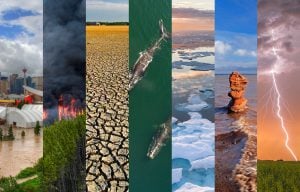Drought drives change
Water limitations from drought inevitably affect vegetation growth and vigour. Drought is already evident in white spruce, and aspen stands across Yukon. Significant drought conditions are predicted, with air temperatures increasing by close to seven degrees Celsius by the end of the 21st century.
Throughout central Yukon, drought conditions over the past ~50 years have reduced tree growth in white spruce forests, while other species’ responses are more variable. For white spruce, which form a significant portion of forests in central Yukon, further drought may reduce their distribution to cooler and moister locations and increase their susceptibility to bark beetle attacks. However, if aspen replaces white spruce, the capacity for the forests to store carbon is likely to increase, and their likelihood of burning will decrease. These shifts may therefore have positive implications for future global change scenarios.
In southwest Yukon, aspen have expanded into adjacent grasslands due to the growing season’s increased length. This encroachment of aspen, if extensive, may cause the loss of some plants that are rare in Yukon, with disjunct populations far removed from their general distribution, such as oriental Koehler’s grass (Koeleria asiatica) and Winterfat (Krascheninnikovia lanata). In contrast to this pattern, models suggest that future drought conditions in valley bottoms will likely allow some Yukon grasslands to grow in size. This would require dieback of the adjacent aspen stands. What happens to aspen, and where, remains to be explored.
The inertia is strong
Many forests, grasslands, and other landscapes throughout Yukon look similar to how they looked 30 years ago and a casual observer may question the notion of change. Despite the chronic press of climate change, the ecosystem’s inherent resistance to change – its inertia – is strong. This is because most northern perennial plants can tolerate difficult conditions for quite a few years.
While willows on Herschel Island–Qikiqtaruk are getting taller as the climate becomes more favourable, they have been unable to expand their local distribution. To do this, they will have to overcome the chemical and physical limitations of the surrounding vegetation community, which will be no easy task.
Some systems seem resilient to abrupt or “pulse” disturbances. In southwest Yukon, a large spruce bark beetle outbreak killed most of the older (and reproductive) white spruce trees. But enough younger trees survived the outbreak that the composition of the forest did not change, suggesting the resilience of the forest to the widespread negative effects of the beetle. However, all the dead trees from the beetle outbreak make these forests more prone to future wildfires, and these fires could be severe, causing a large change in the dominant vegetation








